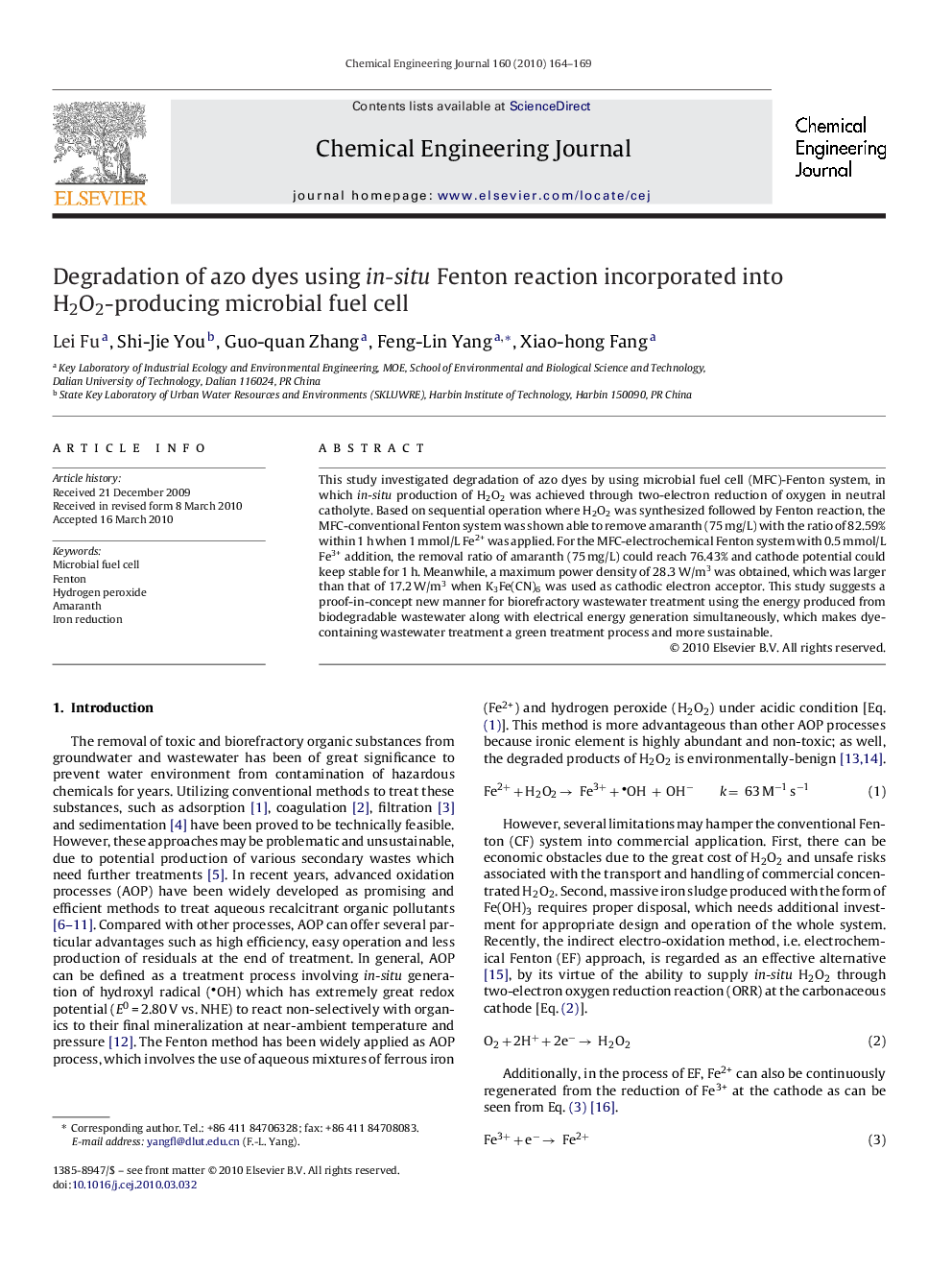| Article ID | Journal | Published Year | Pages | File Type |
|---|---|---|---|---|
| 151838 | Chemical Engineering Journal | 2010 | 6 Pages |
This study investigated degradation of azo dyes by using microbial fuel cell (MFC)-Fenton system, in which in-situ production of H2O2 was achieved through two-electron reduction of oxygen in neutral catholyte. Based on sequential operation where H2O2 was synthesized followed by Fenton reaction, the MFC-conventional Fenton system was shown able to remove amaranth (75 mg/L) with the ratio of 82.59% within 1 h when 1 mmol/L Fe2+ was applied. For the MFC-electrochemical Fenton system with 0.5 mmol/L Fe3+ addition, the removal ratio of amaranth (75 mg/L) could reach 76.43% and cathode potential could keep stable for 1 h. Meanwhile, a maximum power density of 28.3 W/m3 was obtained, which was larger than that of 17.2 W/m3 when K3Fe(CN)6 was used as cathodic electron acceptor. This study suggests a proof-in-concept new manner for biorefractory wastewater treatment using the energy produced from biodegradable wastewater along with electrical energy generation simultaneously, which makes dye-containing wastewater treatment a green treatment process and more sustainable.
